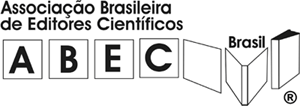|
The manuscript should be prepared using a word processing software, and saved as a .doc or .docx file. Preferred font is Times New Roman, size 12, with double spacing throughout the text, figure legends, and references, with margins of at least 3 cm. Organize the manuscript into the following sections: Cover Letter (addressed to the Editor-in-Chief), Title Page, including Manuscript Title, Running title, Abstract, Keywords, followed by Manuscript Text, Conflict of Interest statement, Acknowledgments, Financial Support, References, and Figure Legends. Cover Letter, Title Page, Acknowledgments, and Financial Support must be provided as separate documents. Abbreviations should be used sparingly.
Title Page: The title page should include the authors’ names in direct order and without abbreviations, along with institutional affiliations in the following sequence: author’s institution, department, city, state, and country. For Brazilian authors, please do not translate the names of institutions. Complete address of the corresponding author must be specified, including telephone number and e-mail address. The number of authors and co-authors per paper should be limited in accordance with the number of authors that contributed to the manuscript. Except for national and international multicenter studies, up to 20 authors and co-authors will be allowed. The remaining authors’ names will be published in a footnote. Provide the ORCID number of the corresponding author and all co-authors.
Potential reviewers: Authors must provide names and contact information (e-mail address and institutional affiliations) of three potential unbiased reviewers, from an institution different from that of the authors.
Title: The title should be as concise, clear, and informative as possible. It should not contain abbreviations and should not exceed 250 characters.
Running Title: The running title may include up to 100 characters.
Structured Abstract: The structured abstract should summarize the results obtained and the major conclusions in such a way that a reader not already familiar with the particular topic of the paper can understand the implications of the article. The abstract should not exceed 250 words and must be structured with the following headings: Background, Methods, Results, and Conclusions. The use of abbreviations should be avoided.
Keywords: Three to six keywords should be listed immediately below the structured abstract (Example: Tuberculosis. Primary health care. Structure of services.). Please visit the website https://www.ncbi.nlm.nih.gov/mesh for reference.
Introduction: The article’s introduction should be brief, and stating the purposes for which the study has been performed. Previous studies should be cited only when essential.
Methods: The methods used in the study should be clear and sufficiently detailed, so that the readers and reviewers can understand precisely what has been done and allow replication of the study by others. Standard techniques only need to be referenced.
Ethics: If the work involves human subjects, the author should indicate that the procedures followed were in accordance with the ethical standards of the responsible committee on human experimentation (institutional, regional, or national) and in accordance with the principles of Declaration of Helsinki, 1964, as revised in 1975, 1983, 1989, 1996, and 2000. For animal experiments, the author should indicate whether a national research council’s guide for animal experimentation or any law on the care and use of laboratory animals was complied with. The approval number must be sent to the journal. In case of research on humans, authors must include in the methods section (ethical considerations subsection), a statement that the study was approved by the Institutional Ethics Committee.
Clinical trials: In the case of clinical trials, the manuscript should be accompanied by the registration number and agency of registration of the clinical trial (REBEC platform).
Results: The results section should be a concise and impersonal account of the new information (all relevant positive and negative findings) revealed by the study. Avoid repeating in the text the data presented in the tables or illustrations and use past tense to write the results.
Discussion: The discussion section should be limited to the significance of the new information and tightly argued, considering the clinical relevance, strengths, and study limitations. Do not include a general review of the topic. Keep the discussion concise and relevant. The main conclusions should be presented as the last paragraph of the discussion section.
Acknowledgments: Any acknowledgments should be short, concise, and restricted to those that are necessary and do not meet the authorship criteria. In case of sponsoring institutions, do not use acronyms.
Conflict of Interest: All authors are required to disclose any type of conflict of interest during the development of the study.
Financial Support: List all the financial support received from agencies, institutions, and other organizations that funded a part or whole of the research.
References: Only references cited in the text should be included in the list at the end of the manuscript. The references should be numbered consecutively in progressive order using Arabic numerals as they appear in the text. The reference list should be formatted according to the Vancouver style adapted. All authors, up to six, must be listed. For seven or more authors, list the first six, followed by et al. Type the reference list on a separate page at the end of the manuscript, using double spacing.
Numbered references to personal communications, unpublished data, or manuscripts either in preparation or submitted for publication should not be listed among the references. Papers accepted for publication should be referred to as in press and the letter of acceptance of the journal must be provided. Such material can be incorporated at the appropriate place in the text in accordance with the following examples: (AB Figueiredo: Personal Communication, 1980), (CD Dias, EF Oliveira: Unpublished Data). In-text citations should be indicated using the appropriate reference numbers as superscripts to the corresponding word, separated by comma or hyphen, example, World1,2, Life30,42,44-50. The references at the end of the manuscript should follow the system used in ‘the uniform requirements for manuscripts submitted to biomedical journals’. The titles of journals referenced should be abbreviated according to the style used in the Index Medicus.
Responsibility for the bibliographic citations in the text and reference list lies entirely with the authors.
Following are the sample references:
1. Articles from journals: Last names and initials of the six cited authors (For seven or more authors, list the first six, followed by “et al.”), full title of the article (in original language), abbreviated title of the journal (can be found at: https://www.ncbi.nlm.nih.gov/nlmcatalog/journals), year of publication, volume number, the first and the last page numbers.
Example 1: Petitti DB, Crooks VC, Buckwalter JG, Chiu V. Blood pressure levels before dementia. Arch Neurol. 2005;62(1):112-6.
Example 2: Freitas EC, Oliveira MF, Vasconcelos ASOB, Filho JDS, Viana CEM, Gomes KCMS, et al. Analysis of the seroprevalence of and factors associated with Chagas disease in an endemic area in northeastern Brazil. Rev Soc Bras Med Trop. 2016;50(1):44-51.
Example 3: Torres RJ, Leopoldo CG, Castro JS, Rodríguez L, Saravia V, Arvelaez J, et al. Chikungunya fever: Atypical and lethal cases in the Western hemisphere: A Venezuelan experience. IDCases. 2015;2(1):6-10. Available from: https://doi.org/10.1016/j.idcr.2014.12.002
2. Book chapter: Cite last names and initials of all Authors of the chapter, Chapters’ full title, Editors, Title of book, edition, Place of Publication: Publisher, Year of publication, chapter pages.
Example: Blaxter PS, Farnsworth TP. Social health and class inequalities. In: Carter C, Peel JR, editors. Equalities and inequalities in health. 2nd ed. London: Academic Press; 1976. p. 165-78.
3. Book: Last names and initials of the authors, Title of book, edition, Place of Publication: Publisher, Year of publication, Pagination.
Example: Carlson BM. Human embryology and developmental biology. 4th ed. St. Louis: Mosby; 2009. 541 p.
4. Websites: Author/organization’s name. Title of the page [Internet]. Place of publication: Publisher’s name; Date or year of publication [updated yr month day; cited yr month day]. Available from: URL
Example: Diabetes Australia. Diabetes globally [Internet]. Canberra ACT: Diabetes Australia; 2012 [updated 2012 June 15; cited 2012 Nov 5]. Available from: https://www.diabetesaustralia.com.au/news/understanding-diabetes/
5. Dissertation/PhD Theses: Revista da Sociedade Brasileira de Medicina Tropical/Journal of the Brazilian Society of Tropical Medicine will not accept the citation of dissertations for a Master of Science, PhD theses, or similar material.
6. World Health Organization (WHO). Chemotherapy of leprosy for control programmes. Technical Report Series 675. Geneva: WHO; 1982. 36 p.
7. Ministério da Saúde (MS). Secretaria de Vigilância em Saúde. Sistema Nacional de Vigilância em Saúde - Relatório de Situação: Mato Grosso do Sul. 5ª edição. Brasília: MS; 2011. 39 p.
Illustrations: All illustrations should be submitted as separate files, and named using only the figure number (e.g., Figure 1, Figure 2). All figures should be numbered using Arabic numerals and cited consecutively in the text. Authors can upload colored, or black and white figures.
Titles and Legends: Titles and legends should be typed at the end of the manuscript with double spacing.
Dimensions: The dimensions of the illustrations and figures should not exceed 18 cm width by 23 cm height. The correct specifications for each figure format are as follows:
-
Images/Photographs must be submitted in high-resolution TIFF format. Verify that the photograph must have been taken at a minimum resolution of 600 dpi—preferably between 900 and 1200 dpi—and prepared using an image editing program (e.g., Adobe Photoshop, Corel Photo Paint).
-
Graphics should be created using any statistical software and saved/exported using the original extensions (.xls, .xlsx, .wmf, .eps., or .pdf).
-
Maps should be professionally vectorized (drawn) in high resolution using CorelDraw or Adobe Illustratorsoftware.
Tables: Tables should be typed with single spacing, with a short descriptive title (positioned above the table), and submitted as separate files. Legends for each table should be placed below the table. All tables should be numbered using Arabic numerals and cited consecutively in the text. Tables should not have vertical lines, whereas, horizontal lines should be kept to a minimum. Tables should be a maximum of 18 cm wide by 23 cm high, using Arial, size 9 font.
Submission Process: All manuscripts should be submitted online at http://mc04.manuscriptcentral.com/rsbmt-scielo in accordance with the instructions at the top of each screen. The peer review process is performed completely online.
On Resubmissions and Revisions: The journal differentiates between: a) manuscripts that have been rejected, and b) manuscripts that will undergo further consideration after requested changes have been made.
Resubmissions: If you have received a letter of rejection and wish the editors to reconsider their decision, you may resubmit your manuscript. In this case, your file will be considered a new submission and you will receive a new manuscript number.
Revision: If the peer reviewers recommend revising your manuscript, please send it for a second analysis and review, forwarding the revised manuscript with the same manuscript number as the original.
After Acceptance: Once a manuscript is accepted for publication, the publication process includes the following steps:
-
A copyright assignment form, provided by the journal’s secretary and signed by the authors, must be returned to the journal.
-
Proofs will be sent to the corresponding author to be carefully checked for typesetting accuracy. Changes or additions to the edited manuscript cannot be allowed at this stage of the editing process. The corrected proofs should be returned to the journal as soon as possible after their receipt by the corresponding author.
-
Erratum requirements will only be accepted in case of confirmation of the fault on part of the technical staff of Journal of the Brazilian Society of Tropical Medicine.
-
Accepted articles will be available in a continuous publication modality online on SciELO database.
Page Charges: There will be no page charges for publication in this journal.
Revista da Sociedade Brasileira de Medicina Tropical/Journal of the Brazilian Society of Tropical Medicine does not provide any kind of translation service.
|






